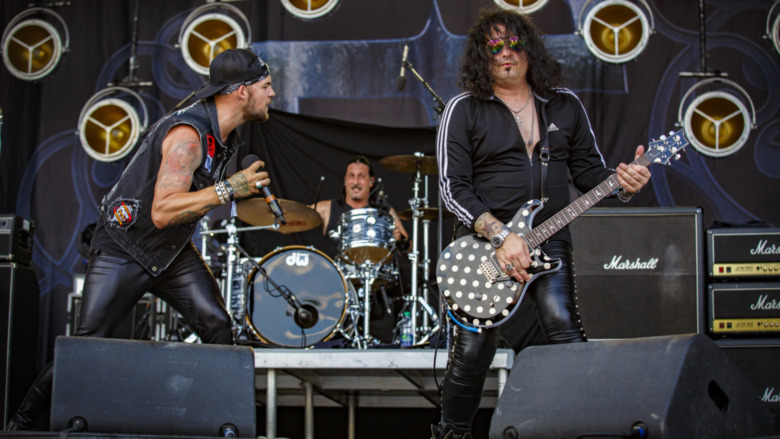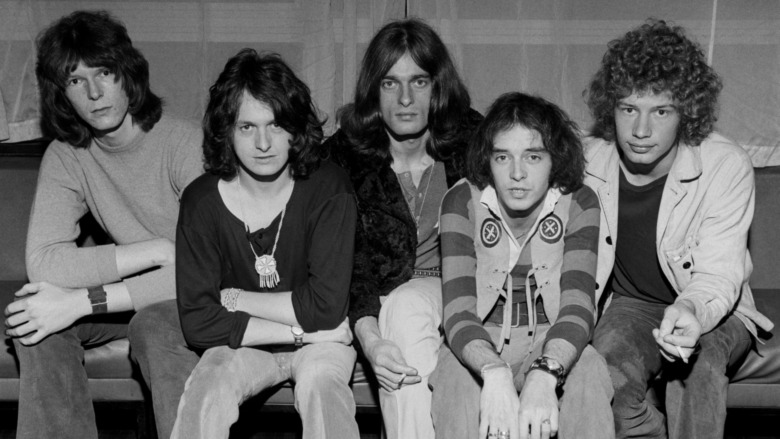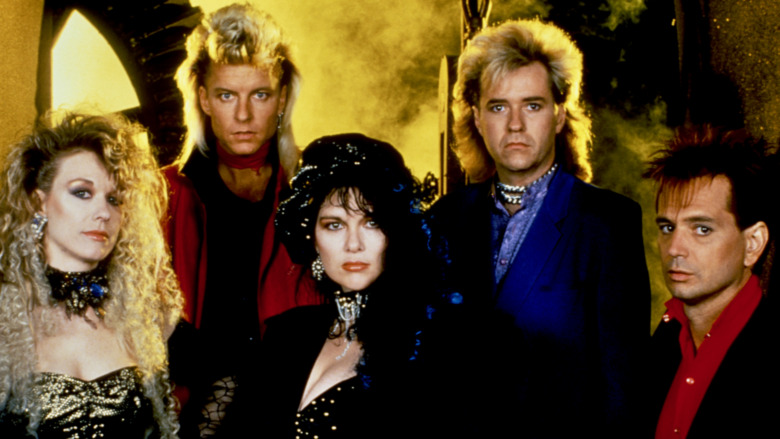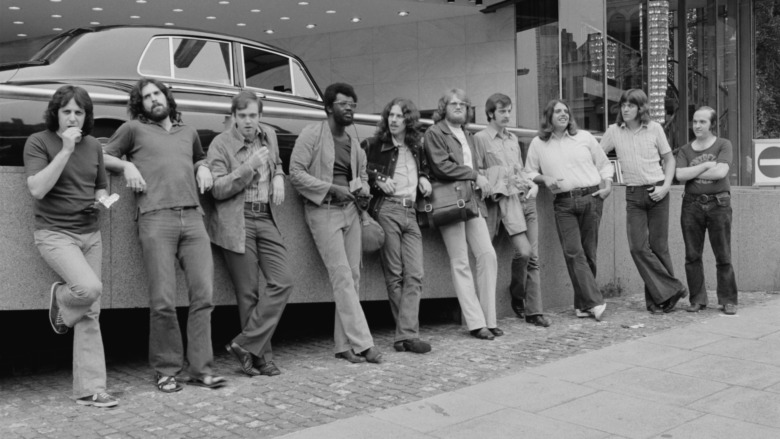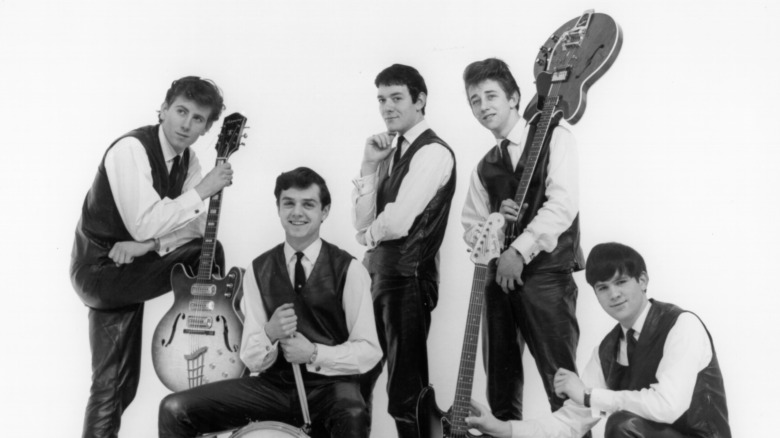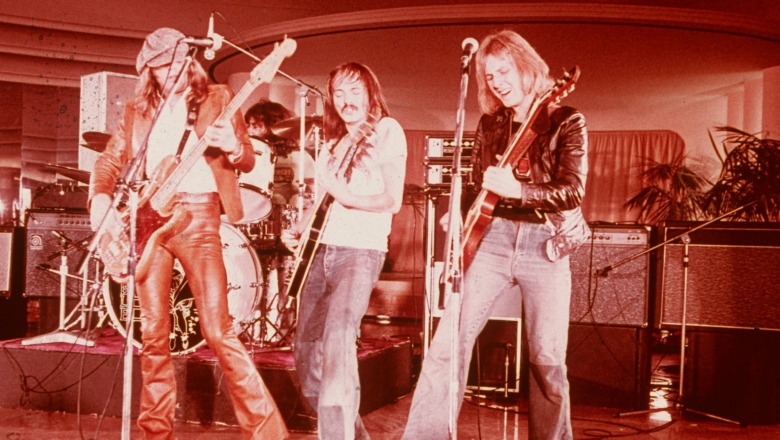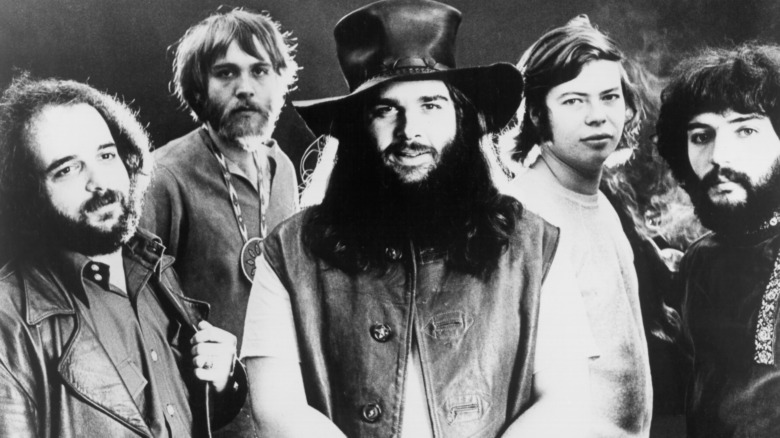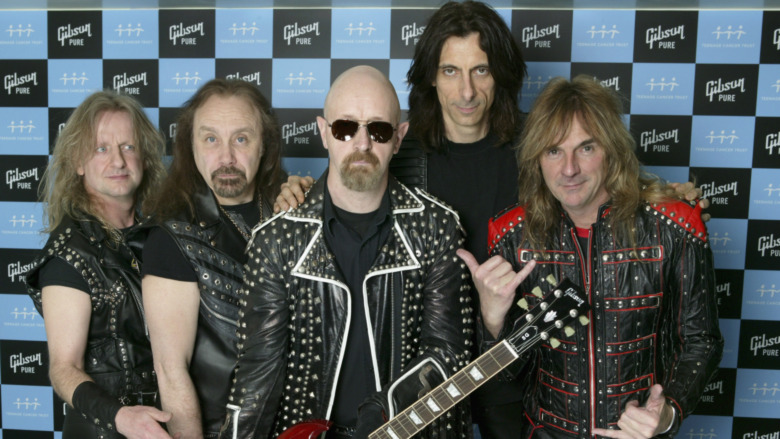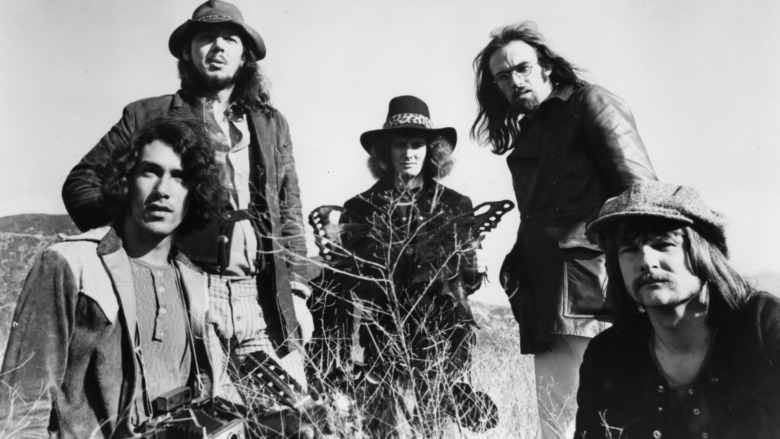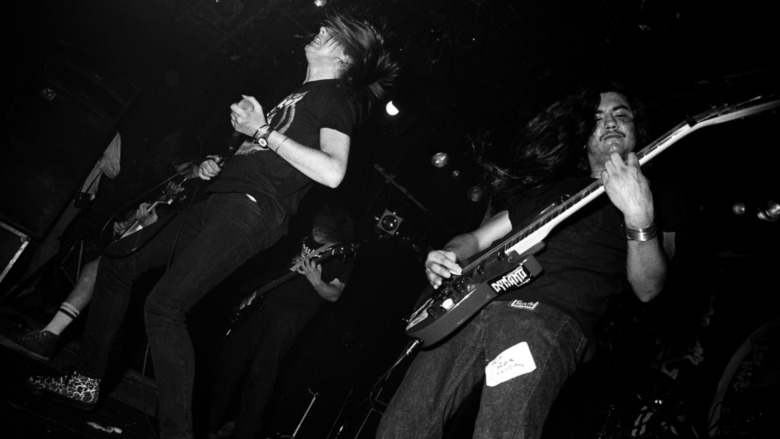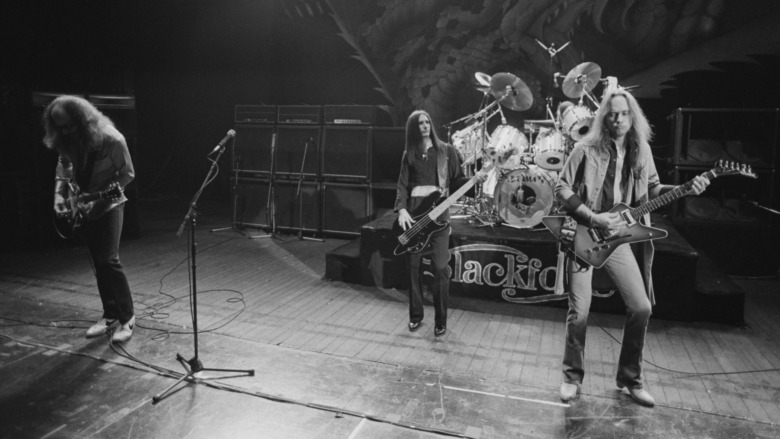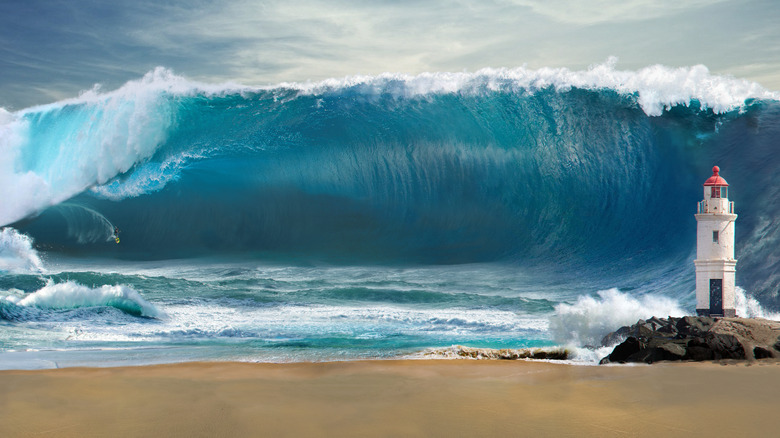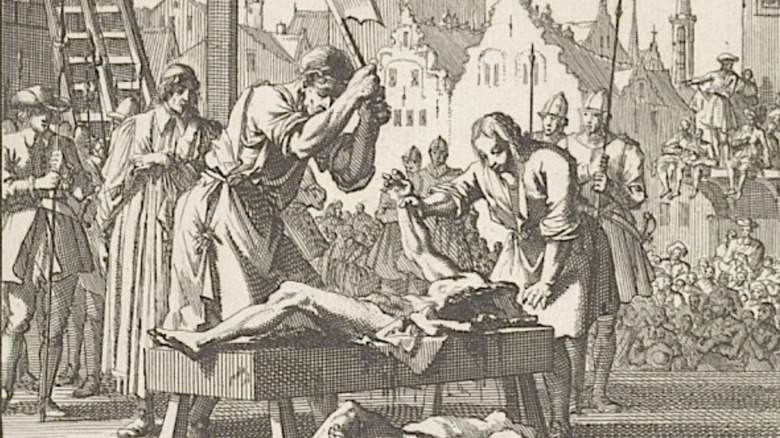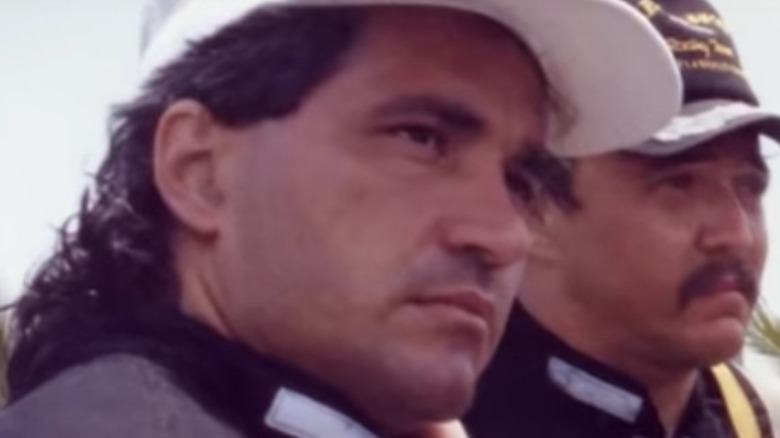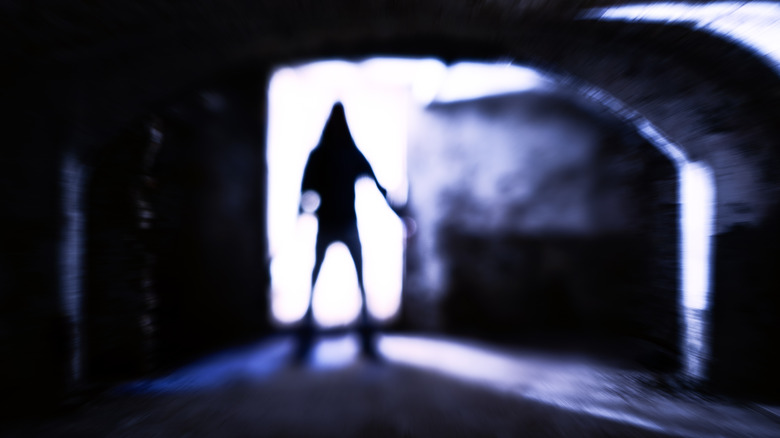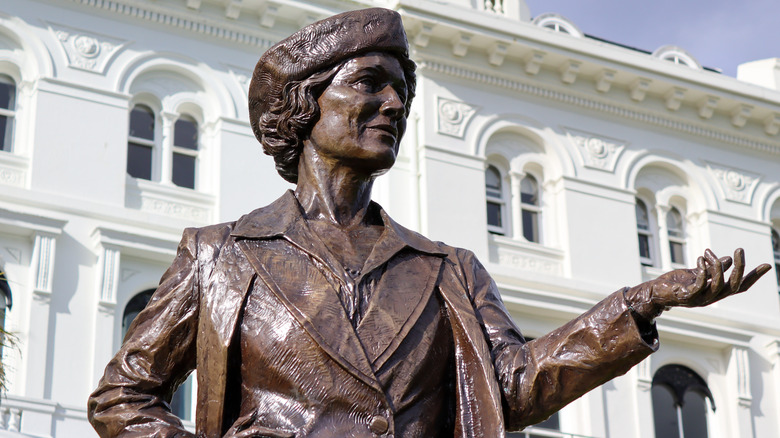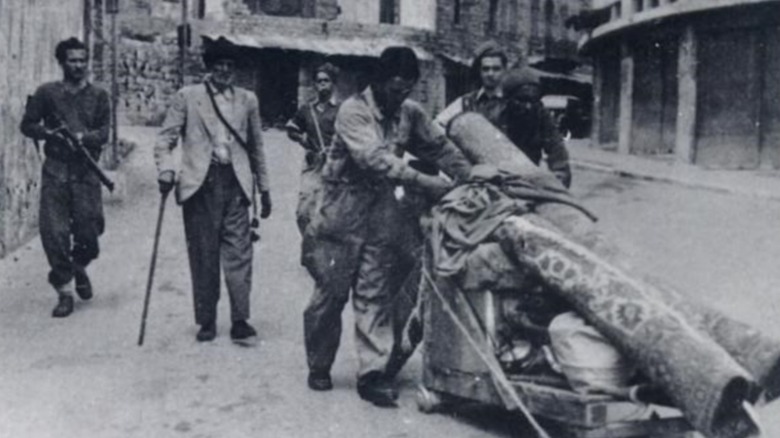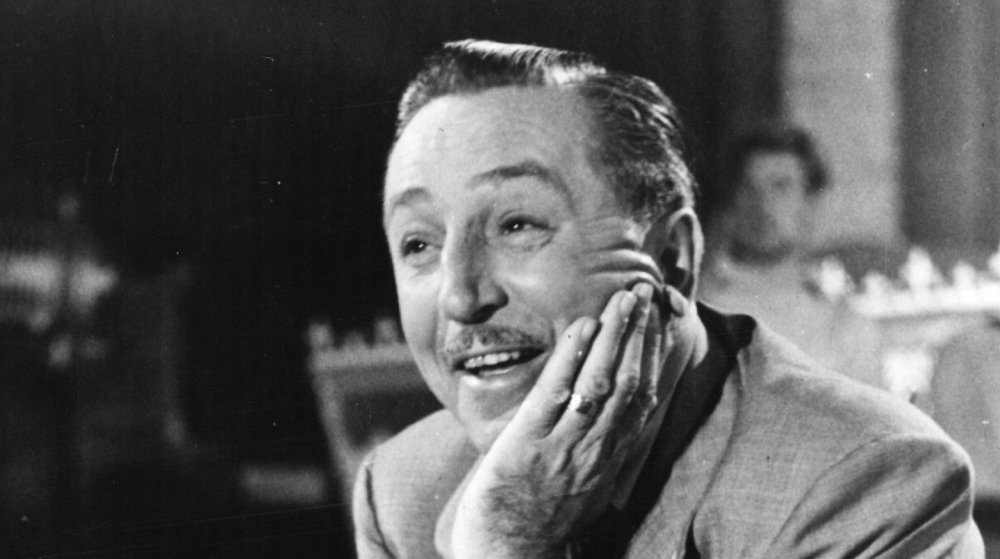
Bands With No Original Members Left In Them
There’s a concept in metaphysics called The Ship of Theseus that asks a simple question — if you slowly replace every piece of a ship over time so that nothing original remains, is it the same ship? If not, when exactly is the turning point?
That might seem like some pretty out-there stuff to ponder, but it has a very practical application — figuring out when a rock band is no longer the same band but something completely new. In other words, if a band has replaced every founding member over the years, is it still the same band, or has it become a very complicated tribute band?
Successful rock bands tend to stick around for a long, long time — The Rolling Stones have been active for almost 60 years — and that means they suffer a pretty high rate of attrition. Age, burnout, personality conflicts, and mortality all peel away members over time, but if there’s money to be made those members are usually replaced, and the band carries on. But when does a band stop being the same band and become something new? What if every single founding member of the band is gone?
It’s hard to believe anyone would consider a band without Keith Richards and Mick Jagger to be The Rolling Stones — but here are 12 bands with no original members left in them.
Quiet Riot: No original members since 2007
Quiet Riot burned very brightly for a very short period of time, but the band has a surprisingly deep history. According to Ultimate Classic Rock, Quiet Riot was originally founded all the way back in 1973 by guitarist Randy Rhoads, who would go on to superstardom with Ozzy Osbourne, along with bassist Kelly Garni. The original lineup also included Drew Forsyth on drums and Kevin DuBrow as lead singer. This version of the band managed two albums but didn’t work well together — Ultimate Classic Rock confirms that Garni once literally threatened to murder DuBrow, which explains why that version of the band broke up in 1980.
Luckily for heavy metal fans, DuBrow reformed the band with drummer Frankie Banali, bassist Rudy Sarzo, and guitarist Carlos Cavazo, and even got Rhoads’ blessing to keep using the name. The result was “Metal Health,” the band’s biggest and best-known album. That means that as Classics Du Jour points out, as far back as 1982, DuBrow was the last original member in the band. The band went through several more incarnations over the years, but after DuBrow passed away in 2007, the band working under the name Quiet Riot has only a thin connection to the original band — technically bassist Chuck Wright is the oldest member, but Loudwire points out he only played on two songs on “Metal Health.”
Yes: No original members since 2015
Formed in 1968 by Jon Anderson, Chris Squire, Peter Banks, Tony Kaye, and Bill Bruford, Yes is one of those bands that has actually been several different bands over the course of its history — with each new version of the band featuring new lineups. In fact, there have been nearly 20 musicians in Yes at some point during the band’s history — and according to Ultimate Classic Rock, since the 2015 death of co-founder Squire there are no original members in it at all.
That doesn’t mean the current version of the band is completely divorced from the progressive rock legends who gave us songs like “Long Distance Runaround” or the more pop-oriented 1980s version of the band. As noted by Loudwire, current member Steve Howe’s involvement with the band dates back to 1970, and Alan White first joined the band in 1972.
One element of confusion with Yes is the fact that almost all of their best-known songs were sung by Jon Anderson, whose distinctly high-pitched voice and New Age-influenced lyrics helped define the band’s sound. Anderson is still alive and active, and as Classics Du Jour points out, was part of a group called Anderson, Rabin and Wakeman, featuring two other former members of Yes, Trevor Rabin and Rick Wakeman. They were legally prevented from using the name Yes but performed Yes songs in concert until their breakup in 2020.
Heart: No original members since 1982
When you think of Heart, you think of the Wilson sisters — Ann with the impossibly huge voice, and Nancy with the shredding guitar licks of songs like “Barracuda.” But neither Wilson sister is an original member of Heart — although they took over almost immediately after they joined.
As noted by Ultimate Classic Rock, Heart’s history goes back to 1967, when guitarist Roger Fisher and bassist Steve Fossen formed a band called The Army. Over the next few years, the band’s name and lineup changed frequently, at one point becoming White Heart, then briefly Heart. In the early 1970s, Ann Wilson joined the band and the name changed again — to Hocus Pocus. Nancy joined the band shortly afterward, and the band became Heart for once and for all.
By the time that classic 1970s lineup saw their big break come in 1975 with the release of “Dreamboat Annie” (which featured the hits “Magic Man” and “Crazy on You”), it was a very different band than the one Fisher and Fossen had founded. The band remained a force throughout the 1970s, but by the early 1980s they’d run out of steam. Fisher left in 1980, and Fossen departed in 1982, leaving no original members in the band. The Wilsons set about re-inventing Heart, transforming it into a 1980s hard rock outfit and releasing the ultimate comeback album, 1985’s “Heart,” without a single founding member’s contribution.
Blood, Sweat and Tears: No original members since 1968
As Al Kooper recounts in his memoir, Blood, Sweat and Tears was formed in 1967 with founding members Kooper, Jim Fielder, Fred Lipsius, Randy Brecker, Jerry Weiss, Dick Halligan, Steve Katz, and Bobby Colomby. You might think with that many founding members some of them must have stuck around, but you’d be almost totally wrong.
Led by Kooper, the band quickly got to work on recording songs that were definitely unusual for rock and roll — simply having a full-on horns section set the band apart from everyone else. They released their first album, “Child is Father to the Man,” in 1968 to moderate success. But the band fell apart almost immediately due to simmering tensions between the members. Kooper, Brecker, and Weiss left the band before work on their second album had even started, setting some sort of record for a breakup as well as a precedent– since then, almost 200 people have officially been members of Blood, Sweat and Tears.
Over the course of those lineup changes and legal battles, all of the original members of the band exited and were replaced, then replaced again. As noted by Ultimate Classic Rock, the one thread holding everything together is Colomby, who still owns the band name and rights to the music. Technically Colomby isn’t in the band anymore, though — he manages and produces, hiring musicians to fill out the band as needed.
The Hollies: No original members since 1999
Named in honor of rock n’ roll legend Buddy Holly, The Hollies were formed in England in 1962 by Allan Clarke and the legendary Graham Nash. They eventually added Tony Hicks, Bobby Elliott, and Bernie Calvert to form the lineup that gave us classic hits like “Bus Stop.” The Hollies are arguably criminally underrated as a 1960s band — as author Peter Doggett points out, they were huge superstars in England and probably second only to The Beatles in terms of hit songs and influence.
After years of success, Nash and Clarke began having creative differences, which came to a head when the band rejected Nash’s song“Marrakesh Express” (considering that song is still a staple of classic rock radio, The Hollies might have some regrets about that). As reported by Ultimate Classic Rock, Nash left in 1968 to form a little band called Crosby, Stills and Nash. Clarke wanted a solo career and left the band in 1971, only to rejoin in 1973 when a song he’d co-written for the Hollies, “Long Tall Woman in a Black Dress,” became a huge international hit. Classics Du Jour notes that Clarke didn’t just leave the band again in 1999, he retired from music altogether. The band today is led by Hicks and Elliott, who are very, very close to being original members — but not quite.
Humble Pie: No original members since 1991
The term “super group” has lost some of its luster in an age when every pop song has a few bars devoted to a superstar rap artist, and vocalists routinely guest on each other’s songs. But back in the 1960s, it was a novel idea when Small Faces guitarist Steve Marriott brought together bassist Greg Ridley of the band Spooky Tooth, Peter Frampton from The Herd, and teenage drumming phenomenon Jerry Shirley to form Humble Pie. Considered one of the first super groups, the band had a string of hit songs, including the timeless classic “30 Days in the Hole.”
As noted by Classics Du Jour, Frampton left in 1971 and would eventually release one of the most successful live albums of all time. Louder tells us the band continued until 1975, Marriott and Shirley reformed it in 1979, but the band fell apart again in the early ’80s. According to Amoeba Music, Shirley secured the rights to the name Humble Pie in 1989 and reformed the band. There was some hope that Marriott and Frampton might join again, but as Ultimate Classic Rock reports, Marriott died tragically in a fire at his home in 1991, ending that dream.
These days you can still go see Humble Pie in concert — but you won’t see any original members in it. Drummer Shirley still owns the name, and he manages the band but doesn’t tour with them.
Canned Heat: No original members since 1981
You probably instantly recognize Canned Heat’s most famous song. “Going Up the Country” is a staple of classic rock playlists, movie soundtracks, and commercials, the sort of song that has become a foundational piece of the background noise of American life.
As reported by Ultimate Classic Rock, the band was formed in 1965 by Alan Wilson and Bob Hite, who were huge fans of American blues music. From the very beginning, the band’s lineup was in flux — the first musicians hired left within days. But appearances at the Monterey Pop Festival in 1967 and their iconic performance at Woodstock in 1969 made them superstars.
Sadly, as Classics Du Jour reports, Wilson died of a drug overdose in 1970. The band powered on with Hite until 1981, when Hite also died of a drug overdose in the darkest way possible. As Louder reports, Hite — who had grown to be over 300 pounds and was nicknamed The Bear — regularly passed out due to his drug abuse, so when he collapsed after snorting a vial of heroin the band just left him in the dressing room and did a gig without him. Then they put him in the back of their tour van and left him there — where he died a few hours later.
The band never broke up — it just keeps hiring new members and plugging on. It’s currently anchored by drummer Adolfo “Fito” de la Parra, who dates back to 1967 with the band.
Judas Priest: No original members since 1973
Judas Priest are legends of heavy metal, with songs like “Livin’ After Midnight” and “The Ripper” regarded as classics of the genre. And the band is still going strong, though it has exactly zero original members — but that shouldn’t be a surprise, since the band hasn’t had any original members for the vast majority of its existence.
As reported by Ultimate Classic Rock, the band was formed in 1969 by lead vocalist Al Atkins and bassist Brian Stapenhill, guitarist John Perry, and drummer John Partridge. They were originally a blues-rock band with an entirely different sound. In fact, according to author Neil Daniels, guitarist K.K. Downing, who came to define the band’s sound along with eventual lead singer Rob Halford, auditioned for the band — and was rejected by Atkins.
The band broke up in the early 1970s, and Atkins joined a band called Freight featuring Downing on lead guitar, which took on the Judas Priest name. But by 1973 the only original member left was Atkins, and the band’s lack of success convinced him to give up, so he quit. Halford joined, setting the stage for the band’s most successful period as their sound evolved into harder rock. From that point on, not a single founding member has had anything to do with the band.
Iron Butterfly: No original members since 1999
In the annals of one-hit wonders, there’s a special place for Iron Butterfly. Founded in 1966 by Doug Ingle, Jack Pinney, Greg Willis, and Danny Weis, the band is famous for exactly one nearly endless song — the extremely 1960s, 17-plus-minute-long “In-A-Gadda-Da-Vida.” But that song is so iconic and instantly recognizable it’s provided a living for the band since its release in 1968, selling 30 million copies since its release.
And the people who have made their living off of that one song at some point over the last 50-plus years is a pretty long list. Iron Butterfly rivals Blood, Sweat and Tears for sheer number of people who have been in and out of it — more than 65 musicians have been official members over the years, says The Morning Call. As noted by Classics Du Jour, the band started a revolving door of members almost immediately — their guitarist and bassist both left after the first album. The band broke up in 1971 but reformed in various incarnations over the years, as “In-A-Gadda-Da-Vida” racked up tens of millions of sales.
As Classicbands.com notes, the band reformed with Ingle and Ron Bushy, who joined the band a few months after its founding. Ingle retired in the late ’90s, leaving Bushy in charge of the group. Iron Butterfly is essentially a tribute band at this point, though Bushy almost counts as an original member.
The Little River Band: No original members since 1998
Sometimes bands bring in musicians to fill in gaps and the new player slowly takes over the band. That’s what happened with one of the first Australian bands to crack the American market, The Little River Band.
The Little River Band formed in 1975 as a bit of a supergroup in its native Australia, as founding members Beeb Birtles, Graham Davidge, Graeham Goble, Dave Orams, Derek Pellicci, and Glenn Shorrock were all pretty established performers in their home country. As Allmusic notes, the band enjoyed almost immediate success with their first album and ended the 1970s as one of the biggest-selling bands around.
The 1980s weren’t so kind, however. As noted by Ultimate Classic Rock, Wayne Nelson joined the group in 1980 as a new bassist. He also sang lead on one song. The band went through a prolonged period of mutation as Shorrock, Birtles, Goble, and Pellici were all gone by 1992 (Orams had left almost immediately after the band’s founding). The original members continued to shuffle in and out of the lineup until 1998, when they all left more or less permanently.
Wayne Nelson took over lead singing duties and today pretty much runs the band. The current lineup features musicians who only date back to 2004 at the earliest.
Napalm Death: No original members since 1986
Unless you’re into grindcore metal, you might not know much about Napalm Death, but within the heavy metal community the band is legendary and influential (and Metal injection tells us the band is also the record holder for shortest song ever recorded, with the 1.316 second-long “You Suffer”). They’ve also been around for more than 40 years, having been founded in 1981. Well, a band called Napalm Death was founded in 1981. None of the people in the band today were there at the time.
The band was launched in 1981 by Nic Bullen and Miles Ratledge, who brought in guitarist Simon Oppenheimer. After a few years of lineup changes, demo recordings, and live shows, Bullen and Ratledge began to evolve in different musical directions, and the group split into two with Bullen leading the official Napalm Death. Bullen’s frustrations continued until he quit the band in 1986, just after recording a final demo that became side one of the band’s first official album, “Scum,” released in 1987.
As Burning Ambulance notes, the band’s lineup has been steady ever since — but the fact is this band wasn’t established as an influential classic until all the original members were gone.
Blackfoot: No original members since 2012
Blackfoot has had an extremely complicated history. Originally formed in 1969 with Rickey Medlocke, Greg T. Walker, Charlie Hargrett, and Jakson Spires, the group chose the name Blackfoot to honor the Native American heritage many of the members shared. But as Puresouthernrock reports, before the group could really gain any traction, Medlocke was asked to join Lynyrd Skynyrd and didn’t hesitate for a second, so Blackfoot was put on hold for a few years.
Medlocke, Walker, Hargrett, and Spires reformed the group in 1974 and finally released their first album, “No Reservations.” This kicked off a stable and successful period for the band, during which they released their signature songs “Highway Song” and “Train, Train,” both of which were chart hits for the band.
Their fortunes turned in the mid-1980s, and the band broke up in 1986. Medlocke continued on with 1987’s “Rick Medlocke and Blackfoot,” which tried for a more modern sound and in the 1990s tried to mold the band towards a more hard rock approach with new members. Then, as Ultimate Classic Rock reports, Medlocke was once again invited to join Lynyrd Skynyrd and once again left Blackfoot without a second thought.
Today, the other founding members of the band are passed on. Medlocke rebooted the band in 2012 — with himself as manager and producer and hired hands playing the instruments. It’s essentially a totally different band, with a sound the founding members wouldn’t recognize.

The Truth About Remnant Fellowship Church Leader Gwen Shamblin Lara's Husband

Here's How Many World Records Madonna Holds

The Untold Truth Of Carl Sagan
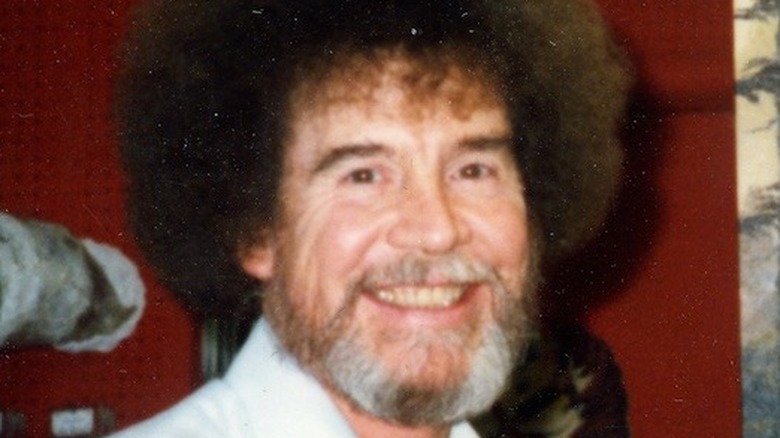
How Long It Took Bob Ross To Film An Entire Season Of The Joy Of Painting
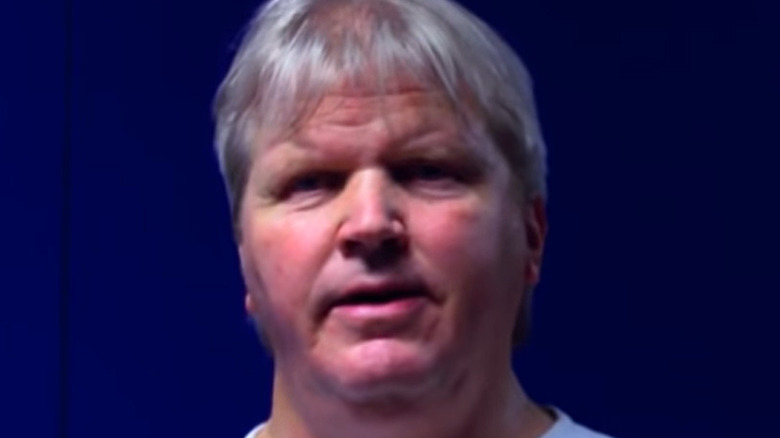
The Truth About Bobby Eaton And Ric Flair's Relationship

This May Have Been David Bowie's Final Phone Call
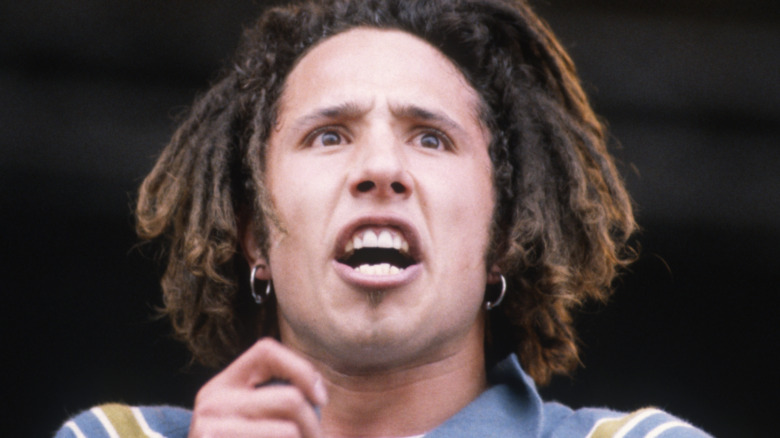
The Reason Zack De La Rocha Left Rage Against The Machine

The Reason Elton John Can't Stand Janet Jackson

The Tragic Life And Death Of Deadliest Catch Star Nick McGlashan
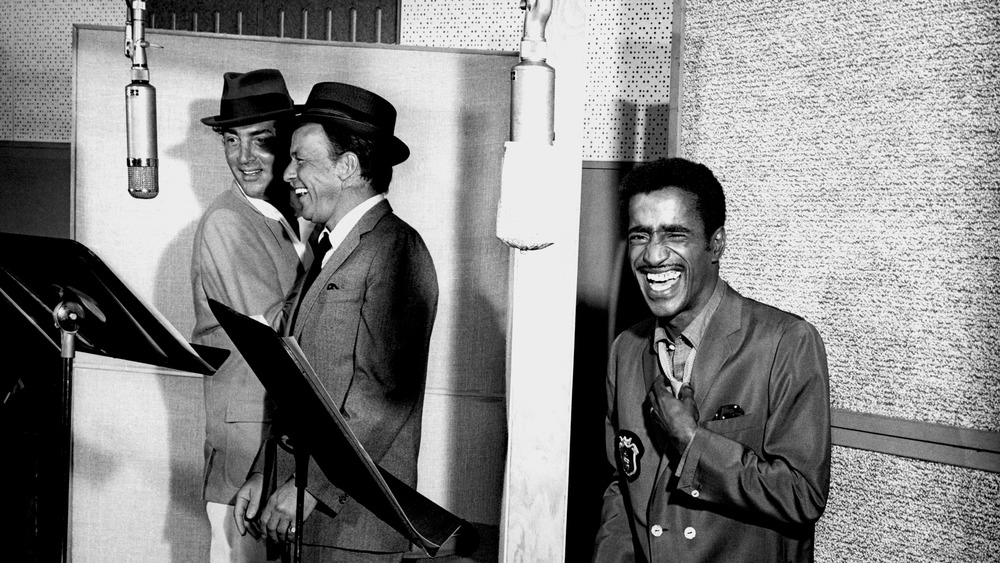
The Tragic Real-Life Story Of Sammy Davis Jr.
